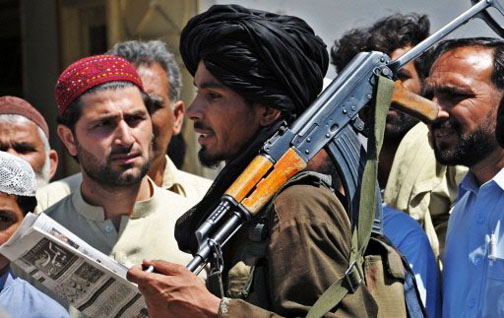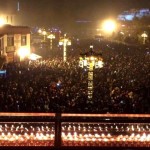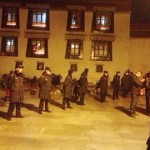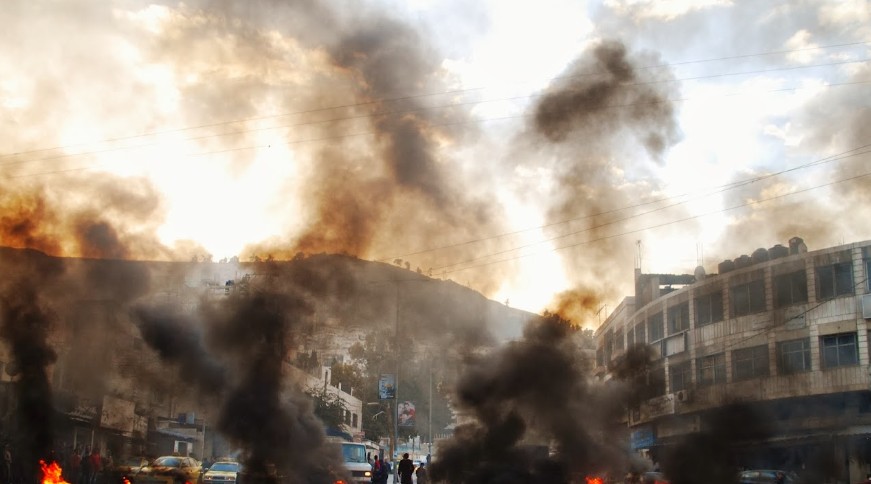To see our motherland free, to see it hold its head among the nations, to see its sons and daughters be respected everywhere, to see its worthy mighty past engaged in building a yet mightier future. Isn’t this worthy working for, worth living for and worth dying for? -Annie Besant
Knowing how it feels to be held hostage by terror, how it feels to be surrounded by pain, and seeing the aftermath of such chaos, I’m sure of one thing. Life will never be the same for those in Peshawar.
Listening to news about 20-40 people being killed every few days in Balochistan or some other city that doesn’t interest us probably has no affect on our senses any more, but this attack truly has shaken us all out of our reveries.
The Taliban, the self proclaimed fighters of faith, are the same people who attack our markets, mosques and churches. An attack on school-children, however, is venturing far beyond any recognizable boundaries of humanity. Retaliation against their pursuers by lashing out at their children is cowardice of the worst kind.
It was months after the Parade Lane attack in 2009 that one could find signs of life on the streets, or even feel alive. This APS attack is many many times worse: it has left a scar on our hearts that is much more deep. 16/12, will always be a dark dark day.
It was a direct attack on the army as said by the leader of the TTP (Mullah Fazlullah). It left hundreds of children and a few member of the SSG and quick reaction forces being severely injured.
Was it a changing point in the history of Pakistan?
Due to this incident for the first time in this decade the government and the army officials are on the same page. The prime Minister of Pakistan Nawaz Sharif has ordered the destruction of these ferocious animals and has also ordered prosecutions of all the Taliban that are presently enjoying their lives in the jails of Pakistan. This is a major step towards progress as now people are safe from the danger that these people would eventually escape as they did after the attack on the prison of Peshawar. It also marks the first time that the media has openly declared India and the USA as the main culprits behind this attack. The previous dictator of Pakistan General (Retired) Pervaez Musharaff in an interview to an international channel has declared all the countries related to the US are providing the breeding facilities to terrorist. It has also been proven that the Modi government has been funding the Taliban since their start as said by Hamid Mir (a professional journalist) in an interview to a local Indian channel.
The Newspapers of Pakistan are another proof that the media has decided to confront the wrongdoers. Pakistani citizens have also been deeply moved by this incident and have shown great determination of unity and of killing these Pests.
It is also the first time that the families are demanding revenge instead of money. Their blood does not need luxury but instead  it needs a guarantee. Guarantee of the future of their generation, guarantee that they will not have a dark day in their lives again.
it needs a guarantee. Guarantee of the future of their generation, guarantee that they will not have a dark day in their lives again.
A proof of this is the family of Mubeen Shah Afridi a student of class 9th who is all over the news. Who was truly a jewel in Pakistan’s crown of success after scoring 3rd position in the federal board. Instead of crying and remembering him his family has decided to use his account for aggravating the feelings of the affectees against the Tehreek Taliban Pakistan. Another prove is the son of Lt Col Shabbir who has vowed to remove every essence of the Taliban from his mother land.
There have been a series of rallies across Pakistan mainly in Peshawar that have portrayed Unity,Endurance and Courage. The world has seen many nations turn the tables of their future. Is this the new beginning for Pakistan? Will they be able to unite and erase the footsteps of destruction?This is an answer that only time will tell. UNITED WE STAND DIVIDED WE FALL.
Efforts of these children will always be remembered in our hearts and minds. Their efforts will never go astray.
Letter by Armaghan Naveed
